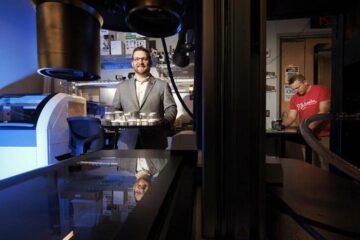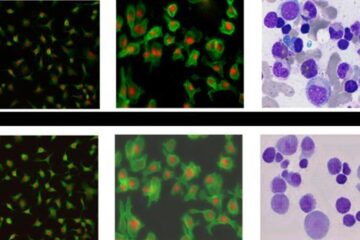Cooperative Research in the Fuel of the Future

International research in fuel is becoming increasingly diverse. It's not just about setting the chemical energy in liquid fuel into motion. There are also the crucial interactions between the various fuel components, the engine, the engine oil and the treatment of exhaust. Four researchers from various German universities and research institutes have now merged to form the “Fuels Joint Research Group”.
The group includes:
Prof. Dr. med. Jürgen Bünger, Institute for Prevention and Occupational Medicine of the German Social Accident Insurance, at the Ruhr-Universität Bochum,
Prof. Dr.-Ing. Peter Eilts, Institute of Internal Combustion Engines at the Technische Universität Braunschweig,
Prof. Dr.-Ing. Axel Munack, Institute of Agricultural Technology and Biosystems Engineering at Johann Heinrich von Thünen-Institute, Braunschweig, and
Prof. Dr. Jürgen Krahl, Technology Transfer Center Automotive (TAC) at the University of Applied Sciences and Arts, Coburg.
All four professors have extensive experience in fuel research projects. Some of them collaborated in the research project “Renewable Diesel”. This project investigated the use of a new biofuel which was created using hydrogenated (i.e., hydrogen-treated) rapeseed oil combined with the two or seven percent biodiesel.
The four researchers now wish to broaden their endeavors both nationally and internationally by initiating further joint research projects. The researchers possess extensive expertise in the fields of chemistry, agricultural technology, medicine and engineering, and it is this combination of experience which makes the Fuels Joint Research Group unique in the world. This interdisciplinary collaboration will be visible in joint publications for professionals.
While the new research group sees fuel as the most important motor-driven design element, the important issues of the exhaust gas treatment as well as environmental and health effects are also at the center of research interest.
Media Contact
More Information:
http://www.hs-coburg.de/All latest news from the category: Interdisciplinary Research
News and developments from the field of interdisciplinary research.
Among other topics, you can find stimulating reports and articles related to microsystems, emotions research, futures research and stratospheric research.
Newest articles

Bringing bio-inspired robots to life
Nebraska researcher Eric Markvicka gets NSF CAREER Award to pursue manufacture of novel materials for soft robotics and stretchable electronics. Engineers are increasingly eager to develop robots that mimic the…

Bella moths use poison to attract mates
Scientists are closer to finding out how. Pyrrolizidine alkaloids are as bitter and toxic as they are hard to pronounce. They’re produced by several different types of plants and are…

AI tool creates ‘synthetic’ images of cells
…for enhanced microscopy analysis. Observing individual cells through microscopes can reveal a range of important cell biological phenomena that frequently play a role in human diseases, but the process of…





















